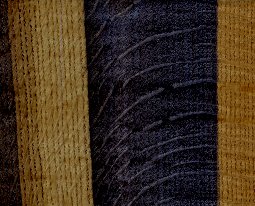|
Put simply, carefully chosen pieces of wood are placed in a chamber where they undergo a “fumigation process”. A chemical reaction between ammonia and the tannic acids contained naturally within the wood changes light coloured wood into darker, rich colours. The more tannic acid, the darker the wood gets. The effect of this completely harmless process creates warm hues within the wood that can not be replicated by more common processes such as staining. Moreover, the effect is non-aging and is far more stable to light when compared to Panga Panga and many other coloured wood types. Finally, the fumigated wood is more elastic and less brittle, making it perfect for ornate and complex veneering.

Smoked Oak
|
Smoked Veneer satisfies many concerns that arise from the manufacturing and use of natural wood materials for use in residential and commercial applications. As with all of Dragonfly's products, it begins the choice to use a manufacturer that values global environmental safety and sustainable practices.
All of the wood used in manufacturing Smoked Veneer comes from regional, sustainable-managed and certified (PEFC-FSC-SCS) forests.
During the fumigation process, there are no waste products produced. The ammonia that is required for the manufacturing process is routed from the fumigation chambers directly into a washing system and is neutralized. The resulting nitrogenous solution is then distributed locally into the farming industry as fertilizer.
No chemicals or other harmful products are used in the manufacturing process that would be a health risk to the end user. This is often a concern with furniture or materials manufactured overseas in areas where poor standards allow for the use of toxic chemicals and by-products such as glues and stains.
<<Back 1 2
|


